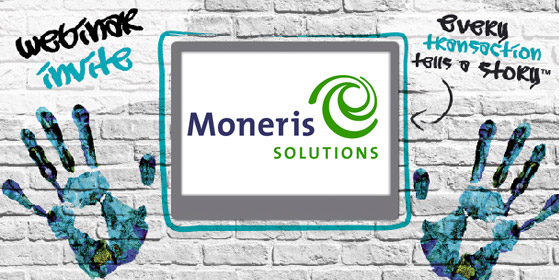Here’s a simple way to improve the end customer experience. Shorten the time it takes to isolate performance issues affecting end customer payment or banking service transactions by about 65%.

During last week’s webinar, Kin Lee-Yow, the Director of Technology Infrastructure and Support Services for Moneris Solutions, expressed his views on how important it is to know how POS, ATM, self-service kiosks, mobile or other online banking applications are performing in the eyes of the end customer. He shared his first-hand opinion of how without real-time transaction monitoring in place, he runs a greater risk of:
- A greater number of remote support dispatches and open problem tickets,
- Longer service disruptions and troubleshooting processes,
- More internal and third party “blame storms”, and
- Undetected performance issues affecting payment channel performance.
All things Kin mentioned above would have a negative impact on any company’s revenues, support costs and ultimately, the end customer experience. He shared that what were once simple environments for IT and customer service teams to manage are getting more and more complex by the minute. This is because there are multiple services being integrated within ATM and POS terminals, more EFT and interbank connections, and a higher overall volume of customer transactions being driven through these channels than ever before. Kin also says that many tools such as network sniffers, log analyzers and switch monitoring tools were simply not designed to handle the end-to-end monitoring of a complex transaction environment, resulting in hours and hours of manual labor to piece together fragmented information gathered across many internal and third party silos.
So this is why Moneris, along with many other banks, ATM deployers, payment processors and merchant service providers, are choosing to invest in transaction monitoring as a part of their IT management strategy.
In the past two years, we have seen business transaction management (BTM) technologies make significant progress in terms of deployment and data gathering techniques. As a result, BTM has become the fastest growing segment of application performance management (APM) tools today. “Traditional” BTM solutions that are expensive to deploy, tough to scale and time consuming to maintain are quickly losing ground to the alternative “lightweight” BTM approaches that have made it much easier to adopt this critical dimension of monitoring and service reliability management.
Today, BTM solutions are helping payment processors, banks, ATM deployers, retailers and merchant service providers to safely expand service offerings, streamline troubleshooting processes, and improve overall network availability. Many BTM adopters in the payments industry are reporting at least 65% faster problem isolation when it comes to identifying issues affecting transaction performance. In a nutshell, BTM gives these businesses the power to answer, at anytime, “How are my POS, ATM or other self-service applications performing in the eyes of my customer?”
Some examples of what real-time transaction intelligence is telling BTM adopters about the end customer experience:
- A rise in transaction decline rates for a certain BIN range or group of POS/ATMs (ie: if one of the top 10 POS or ATMs have no transactions in the last hour)
- A rise in failed transaction rates either by POS/ATM terminal ID, card type, interbank connection, EFT connection or service application (ie: the transactions from a certain bank card are all failing)
- Response code errors that are linked to specific network or application communications (ie: a MAC or other network error occurs)
- Specific third party service response slowdowns or failures (ie: which POS/ATM service or application is having the issue, and who owns the problem?)
- Transaction trending and trafficprofile breakdowns (ie: compare transactions based on card types, on us vs. off us transactions, or profile transaction traffic originating from the various ATM services offered)
Historical transaction data can also be manipulated to discover customer trends and report on information such as:
- User frequency
- Usability issues at the self-service device
- A breakdown of traffic volumes based on services used or card type
- Ratio of third-party to own transactions
- Location profitability (or loss due to downtime)
For further information on how Moneris Solutions and their back-end payment processing partner, the Royal Bank of Canada, use business transaction management software to collaboratively manage end-to-end transaction performance for over 350,000 merchant locations watch the recorded version of last week’s webinar titled, “Moneris Solutions Shares Their Story: How Transaction Monitoring Improved Visibility into the End Customer Experience.”

